← Back
Business partner experience
Tasks
- Hypothesize and test/proof a new registration path for business partners, include third-party authentication and marketing channels
- Hypothesize and test/proof for partner relationship and success (console)
- Integration of .com taxonomies and components in prototype
- Collaboration with dev and business units for value and usability drivers
Timeframe
- 3 months - workshops, surveys and behaviors research with partners and internal stakeholder
- 1 month journey map (2 sprints)
- 6 months staggered design/dev sprints for MVP
- 2 months user testing with pilot groups
Team
- Web strategist - align with marketing and SEO
- Front-end dev - deliver prototype and manage components
- UX designers - lead discovery, findings and prototyping
- Partner managers - SMEs and partner relationship managers for those participating in testing
- XD strategists for UAT scripting for unmoderated testing with pilot subjects
Activities and methods
- User requirements workshop with SMEs and partners (interviews, DT sessions, as-is audit) IT and data governance policies for GDPR
- Rapid, static prototyping for console visuals
- User flow diagramming for actors and actions
- Blocking diagrams and wires for design language approvals where components were to be extended
- Functional prototype for usertesting.com unmoderated
- Live prototype for pilot
Sources and common fields
Define the channels, data sources and business requirements across units that can be shared.
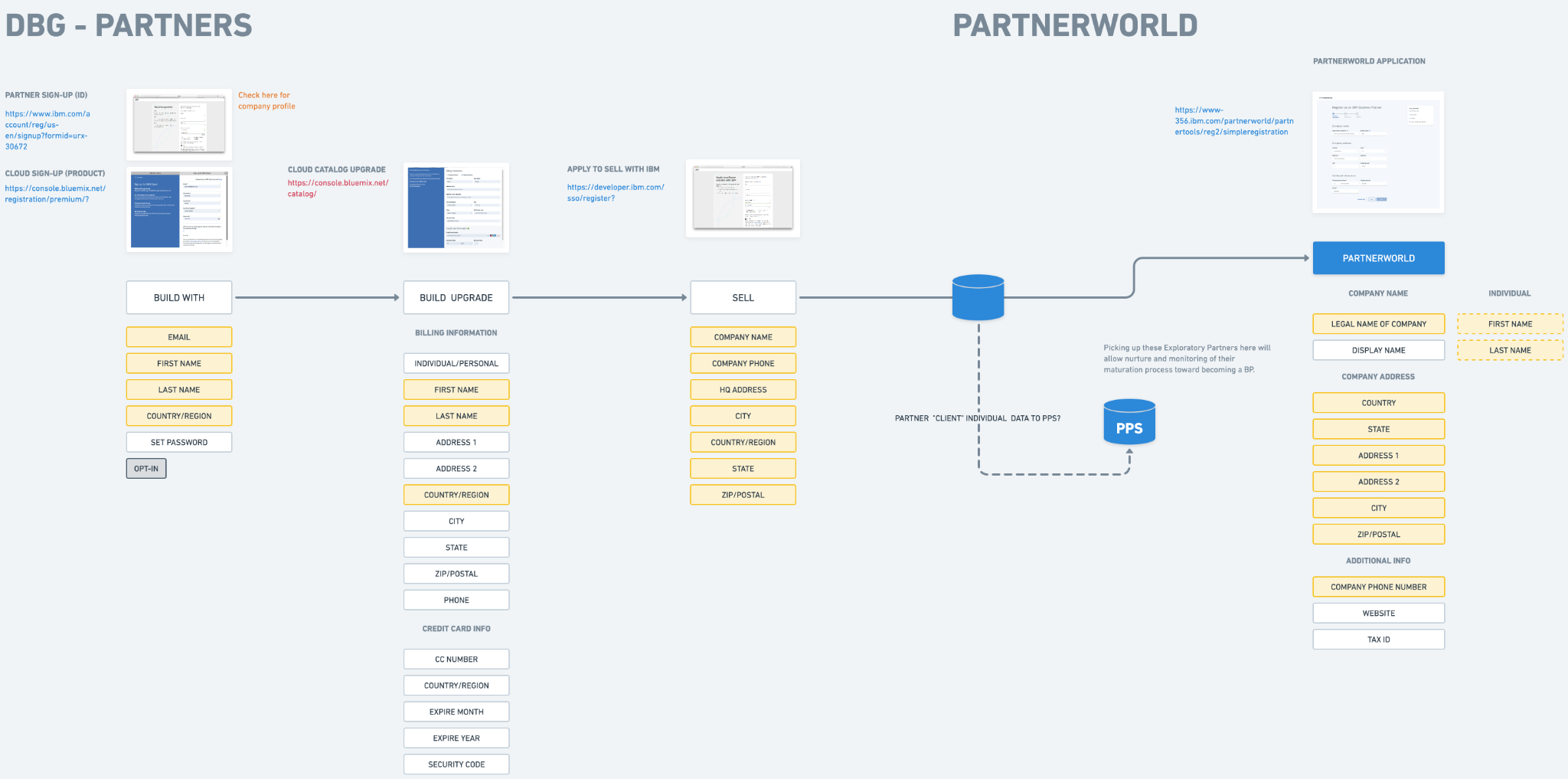
Partner data has multiple points of origin and sharing data is valuable for internal efficiency and reducing repeat actions for users.
Member sign-up and onboarding
Defining the path options for the business and the potential partners.
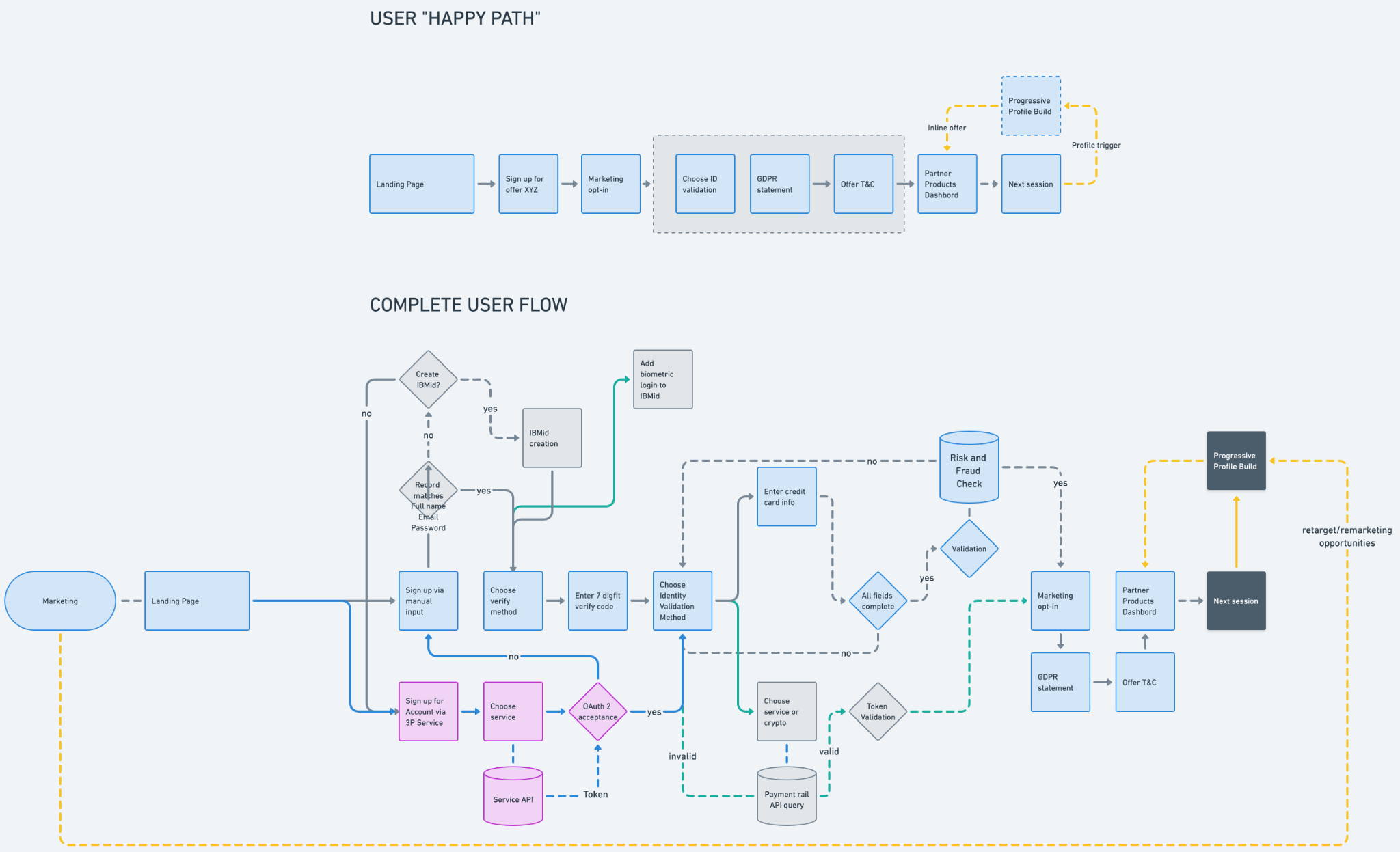
Mapping the user flow from marketing channels to sign up. A hybrid service map for infrastructure and user requirements.
Progressive profile and dashboard
The pieces and parcels needed to create a partner profile and populate the console.
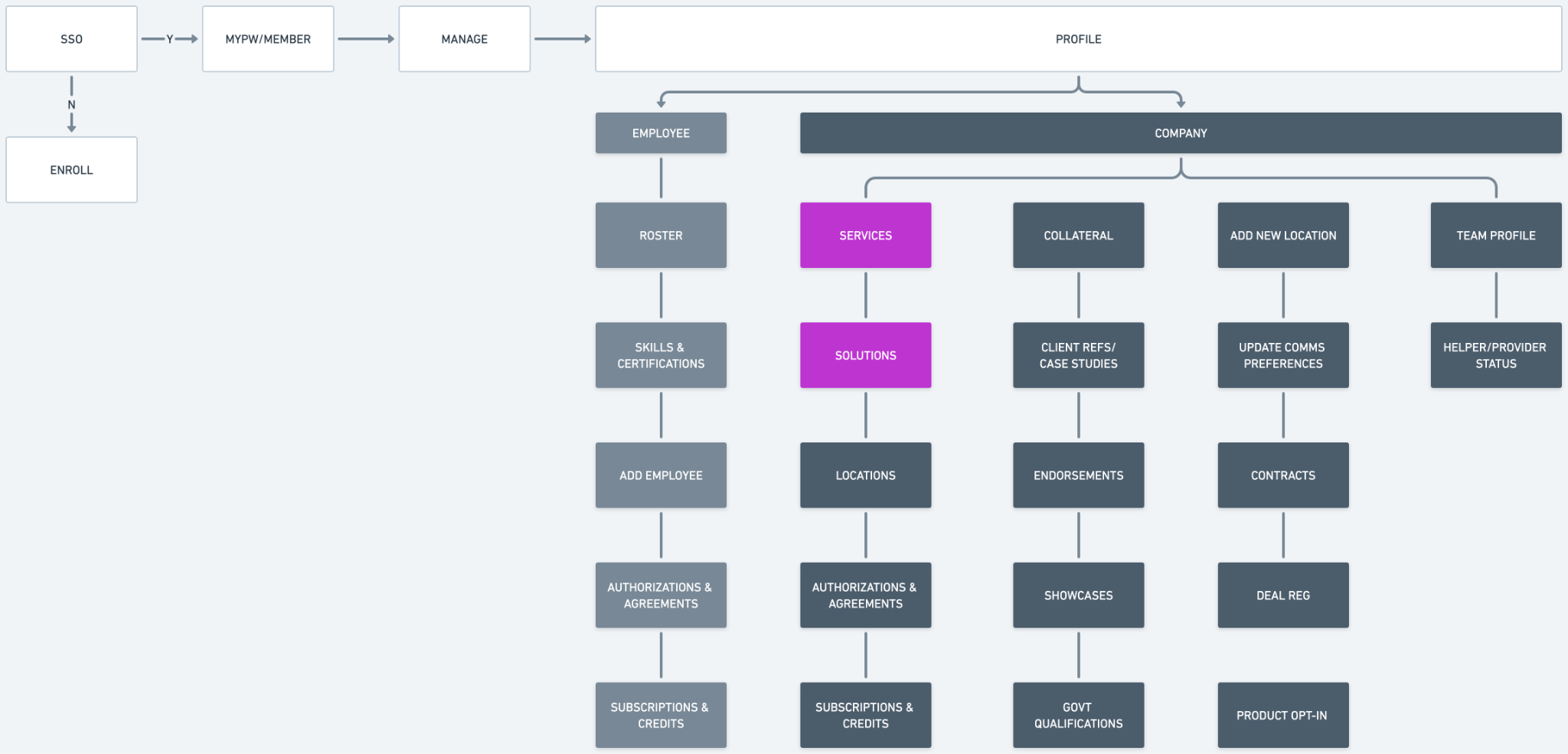
Partner research overwhelmingly showed people preferred self-service and graduated onboarding.
Console layout
The destination for partners to manage their relationship and services.
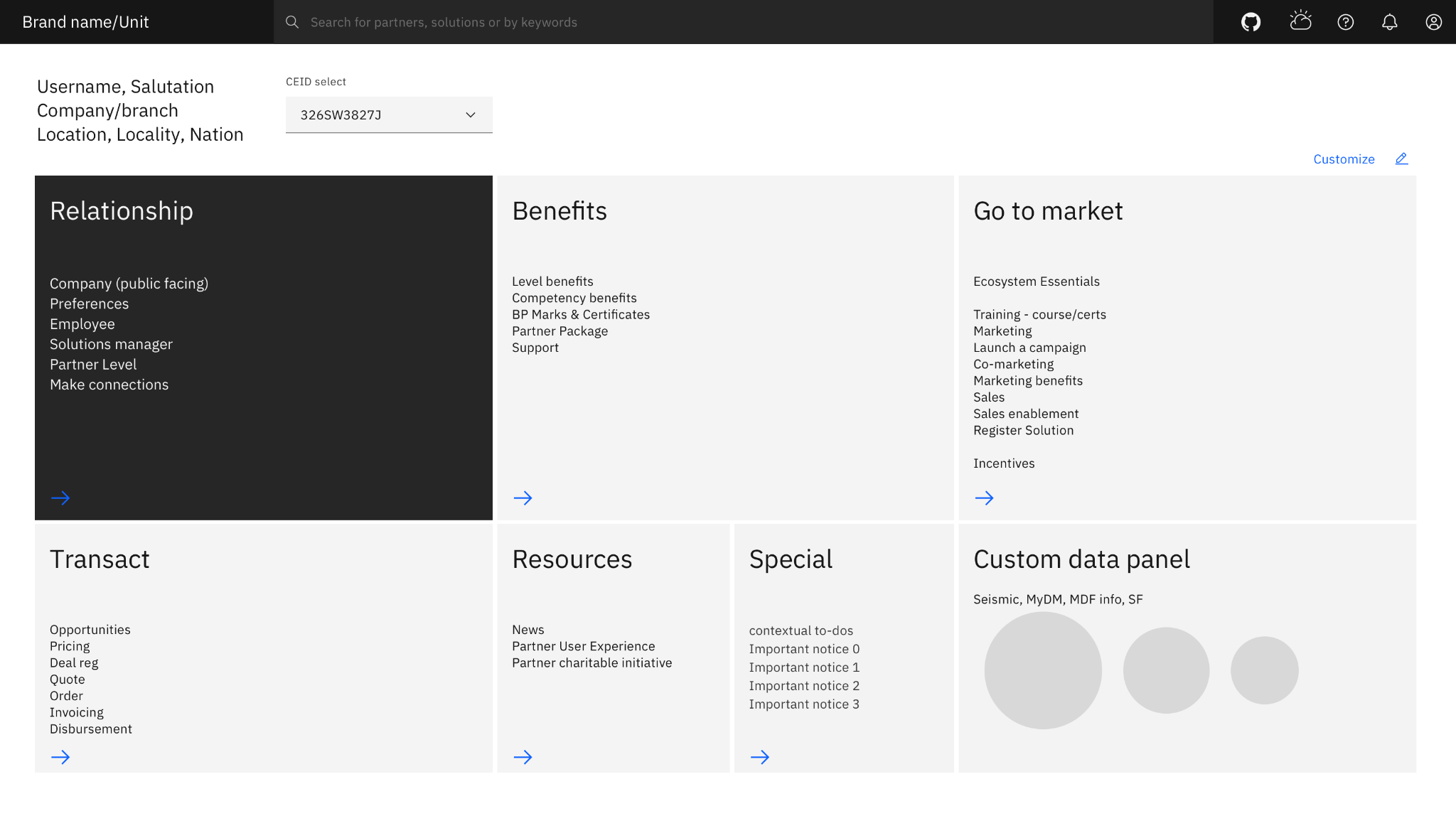
Blocking wire based in Carbon Design System, content derived from partner interviews and most-accessed tools at time of build. This layout was the foundation was the proposed default state for partners.
Visualizing a use state
Conceptualizing the console with data flowing in and out.
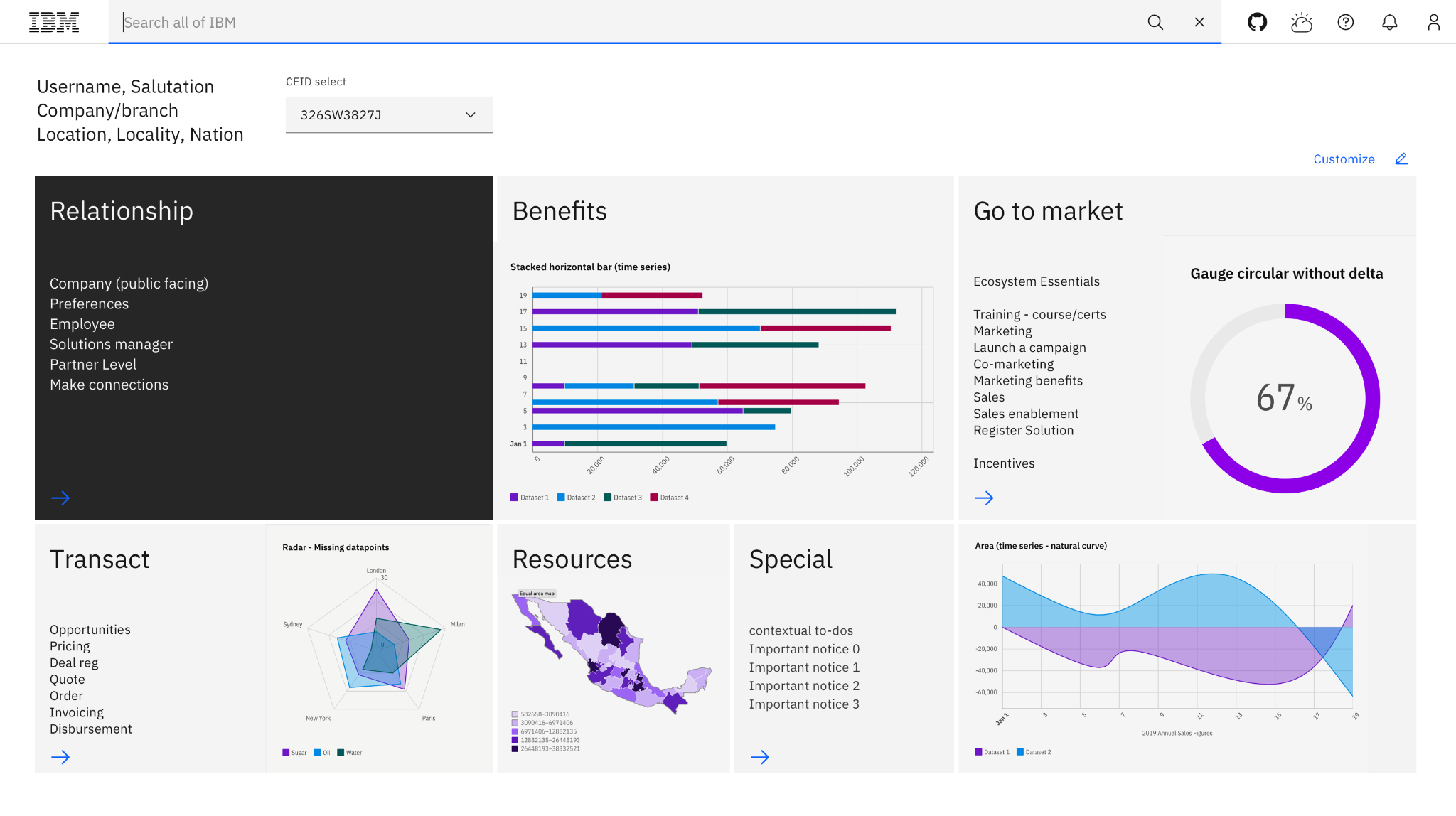
Simulating the data feeds for proofing.
Applying it to the larger build
How might we integrate these experience components and data into the larger console?

This diagram was created for dev and stakeholder review to validate and comment. It also notes where the new console work would be combined to compliment the existing.
Dev and adoption
The Partner Advisory Council had been asking for better management of their accounts and relationships and this project was designed to deliver the first wave of changes that would allow more transparency and easier viewing of the data most important to their partnerships. This project was delayed due to multiple database integration complications. It was in dev at the time I left this organization. It is in use today after the technical adversity was resolved and new fields/options added to reflect the upgrades to the program policy in 2021.
Post a comment